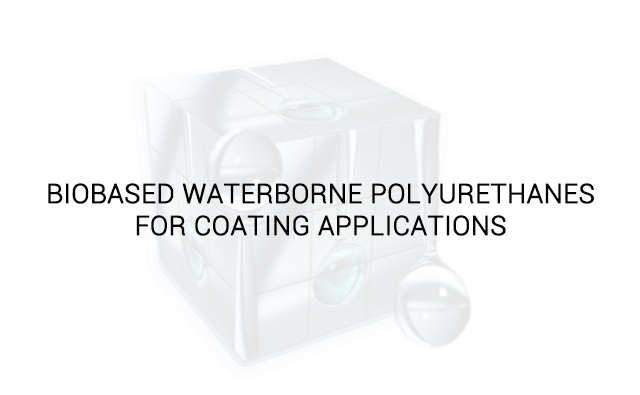Industry News, Coatings
Biobased waterborne polyurethanes for coating applications

Industry News, Coatings

Link: Biobased waterborne polyurethanes for coating applications | European Coatings
Reference Study: Progress in Organic Coatings, Volume 97, August 2016, Pages 175–183
Belgian researchers performed biobased waterborne polyurethanes (WPU) from two commercially available partially or fully dimerised fatty acid polyols of similar hydroxyl values, close to those of petro-based polyols used for coating applications.
Similarly to the conventional WPU, they were synthesised using a solvent-based process at a constant isocyanate index INCO of 110. The effect of hard segment content made of ionic dimethylolpropionic triethylammonium salt (DMPTA) and both aliphatic diisocyanates isophorone diisocyanate (IPDI) or 4,4′-methylene bis(cyclohexyl isocyanate) (H12MDI) as coupling agents was investigated on the behaviour of WPU dispersion in water and the thermal and mechanical properties of the films obtained after casting and drying these WPU dispersions.
As expected, the results highlighted that the increase of hard segment yielded an increase of hardness and a decrease of thermal stability in relation with the presence of hard segment moieties in the range of 18–26 wt%. More interestingly, the nature of the polyols strongly affected the final properties of the materials. Indeed, the WPU based on “Veopur” exhibited elastomeric behaviour with values of strain at break superior to 600%, while “Priplast”-based WPU showed a brittle behaviour with strain at break less than 50%, especially when synthesised from H12MDI as coupling agent.
Biobased waterborne polyurethanes (WPU) were performed from two commercially available partially or fully dimerised fatty acid polyols of similar hydroxyl values (IOH around 60 mg KOH/g), close to those of petro-based polyols used for coating applications. Similarly to the conventional WPU, they were synthesized using a solvent-based process at a constant isocyanate index INCO of 110. The effect of hard segment content made of ionic dimethylolpropionic triethylammonium salt (DMPTA) and both aliphatic diisocyanates isophorone diisocyanate (IPDI) or 4,4′-methylene bis(cyclohexyl isocyanate) (H12MDI) as coupling agents was investigated on the behaviour of WPU dispersion in water and the thermal and mechanical properties of the films obtained after casting and drying these WPU dispersions. As expected, the results highlighted that the increase of hard segment yielded an increase of hardness and a decrease of thermal stability in relation with the presence of hard segment moieties in the range of 18–26 wt%. More interestingly, the nature of the polyols strongly affected the final properties of the materials. Indeed, the WPU based on Veopur exhibited elastomeric behaviour with values of strain at break superior to 600%, while Priplast-based WPU showed a brittle behaviour with strain at break less than 50%, especially when synthesized from H12MDI as coupling agent.
Biobased polyols; Waterborne polyurethanes; Functionalization; Dispersion; Physical properties
Copyright of this article by European Coatings. We are sharing and promoting the market innovation.
If you like this article, kindly to visit www.european-coatings.com